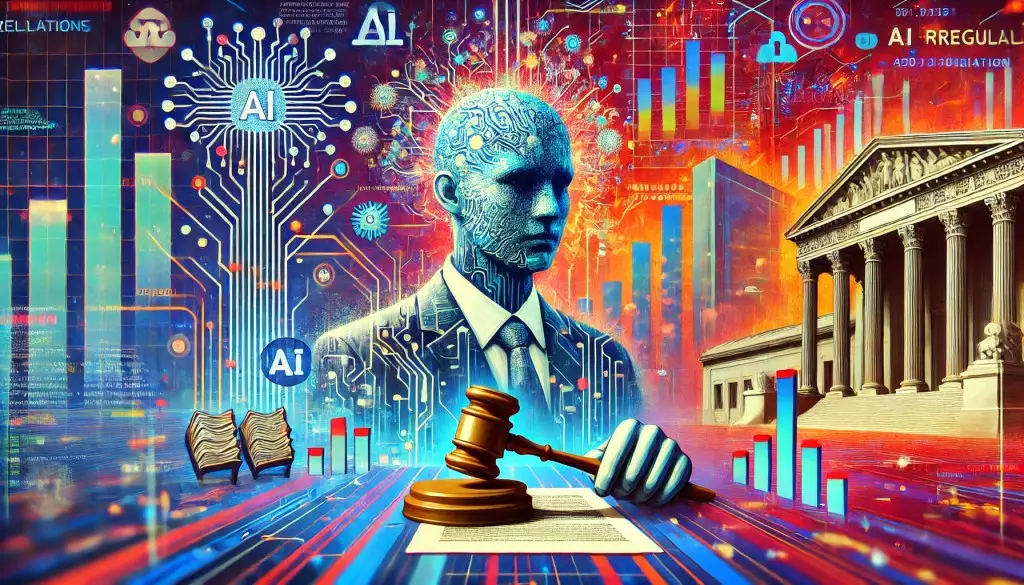In a dramatic unfolding of events regarding artificial intelligence (AI), the Trump administration has reversed an Executive Order from President Biden that initially aimed to lay the groundwork for comprehensive AI regulation. The reversal raises critical questions about the role of government in overseeing technology that permeates almost every facet of modern life. The recent hearing held by the Senate Committee on Commerce, Science, and Transportation, featuring prominent voices from both industry and government, starkly illustrated the complexities surrounding AI legislation, the needs of American companies, and the national imperative to remain competitive, especially against rivals like China.
During the three-hour session, high-profile executives, including OpenAI’s Sam Altman and Microsoft’s Brad Smith, passionately advocated for more streamlined processes to build the infrastructure necessary for AI. Their demands encompassed everything from faster permitting for data centers to an expedited immigration process for skilled foreign labor. The urgency was palpable—without the robust infrastructure to support the development of AI technology, American companies risk lagging in an increasingly competitive global arena. This banter between industry leaders and policymakers signaled more than just a plea for efficiency; it encapsulated a broader strategy vital for American economic growth.
The Imperative for Infrastructure and Talent
The discussions illuminated a fundamental truth: AI innovation does not exist in a vacuum. It thrives on a foundation of excellent infrastructure—be it data centers, power sources, or talent. Altman emphasized that the future hinges on “abundant intelligence and abundant energy,” pointing to an underlying requirement for a steady supply of power and skilled workers to tap into AI’s full potential. He postulated that the U.S. must not only lead AI development but also ensure that its energy and workforce capabilities are aligned with these aspirations.
AMD’s Lisa Su echoed this sentiment, highlighting the importance of an open ecosystem that allows ideas to flourish. Her assertion that innovation must percolate through every layer of the AI stack reflects a critical understanding of technology as a collaborative effort. Without reducing barriers to innovation, America risks ceding its technological edge. This clarity on the need for both domestic growth and international engagement could not have come at a more crucial time, especially as American leadership in this domain becomes increasingly challenged.
The Economic Stakes of Global Competitiveness
One of the most provocative statements made during the hearing was Microsoft’s assertion that innovation in AI is a race that cannot be won in isolation. The narrative of American exceptionalism in technological achievements needs to mesh with an openness to global talent and markets. This requires a delicate balancing act for policymakers who must weigh national interests against the advantages of collaboration. The executives articulated a need for clear export policies, stressing that for America to lead, its innovations must be accessible and attractive on the world stage.
The implications of this are substantial not just for tech companies but for the economy at large. As Brad Smith noted, broader adoption of AI, or what industry insiders refer to as “AI diffusion,” has the potential to significantly boost productivity across various sectors. The ability for companies to harness AI and embed it into everyday operations would not only drive economic growth but also present opportunities for innovation at all levels. However, this optimism is tempered by the reality of regulatory frameworks lagging behind technological advancement.
The Dilemma of Regulation: A Double-Edged Sword
The question of how to regulate AI development remains contentious. Executives expressed caution against overly stringent regulations that could stifle innovation. Comparisons to EU regulations highlighted concerns regarding pre-approval processes that could hinder companies from rolling out critical advancements in a timely manner. It brings to the fore an essential debate: how does one strike a balance between necessary oversight and enabling a thriving, competitive tech landscape?
AI stands at a crossroads. On one hand, a lack of regulation allows rapid development, as seen with trailblazers like OpenAI. On the other, the unregulated nature of AI can lead to unpredictable consequences that affect individuals and society alike, reminiscent of the earlier pitfalls faced by social media. The executives’ divergent views on regulation revealed the nuances and pragmatism necessary for navigating this new terrain. The desire to push boundaries in innovation must coexist with a robust framework that safeguards public interests.
A New Era of Cooperation
As discussions around AI regulations unfold, it becomes increasingly clear that collaboration and open dialogue between public and private sectors are imperative. The executives’ call to action for creating a more integrated approach to AI development signifies a shift toward cooperative policymaking. It urges a rethinking of how the American tech ecosystem interacts with global dynamics, promoting a culture where innovations can be shared rather than hoarded.
The shifting dynamics brought by international competitors compel the United States to not only invest in its infrastructure but also to remain attuned to global standards and partnerships. Without a unified front, the potential for American companies to lead in AI and related fields might fizzle out against the backdrop of escalating global competition. Ultimately, fostering an environment that encourages both innovation and global cooperation will be key to maintaining American leadership in artificial intelligence.

